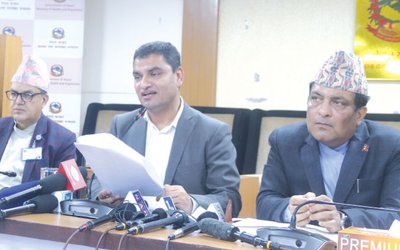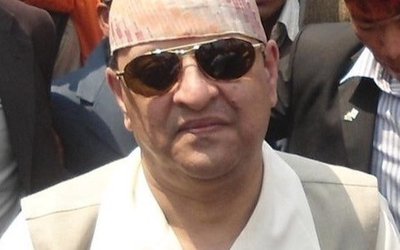
The number of measles cases is increasing in certain areas of Nepal, with 247 confirmed cases in 2018, up nearly 250 per cent from 2017. The number of confirmed measles cases was 99 in 2017.
“The ground for the global measles outbreaks we are witnessing today was laid years ago,” said Henrietta Fore, UNICEF Executive Director. “The measles virus will always find unvaccinated children. If we are serious about averting the spread of this dangerous but preventable disease, we need to vaccinate every child, in rich and poor countries alike.”
Acording to a press release issued by UNICEF, an estimated 169 million children in the world missed out on the first dose of the measles vaccine between 2010 and 2017, or 21.1 million children a year on average, UNICEF said today.
Widening pockets of unvaccinated children have created a pathway to the measles outbreaks hitting several countries around the world today.
In the first three months of 2019, more than 110,000 measles cases were reported worldwide – up nearly 300 per cent from the same period last year. An estimated 110,000 people, most of them children, died from measles in 2017, a 22 per cent increase from the year before.
Two doses of the measles vaccine are essential to protect children from the disease. However, due to lack of access, poor health systems, complacency, and in some cases fear or skepticism about vaccines, the global coverage of the first dose of the measles vaccine was reported at 85 per cent in 2017, a figure that has remained relatively constant over the last decade despite population growth. Global coverage for the second dose is much lower, at 67 per cent. The World Health Organization recommends a threshold of 95 per cent immunization coverage to achieve so-called ‘herd immunity’.
In high income countries, while coverage with the first dose is 94 per cent, coverage for the second dose drops to 91 per cent, according to the latest data.
The United States tops the list of high-income countries with the most children not receiving the first dose of the vaccine between 2010 and 2017, at more than 2.5 million. It is followed by France and the United Kingdom, with over 600,000 and 500,000 unvaccinated infants, respectively, during the same period.
In low- and middle-income countries, the situation is critical. In 2017, for example, Nigeria had the highest number of children under one year of age who missed out on the first dose, at nearly 4 million. It was followed by India (2.9 million), Pakistan and Indonesia (1.2 million each), and Ethiopia (1.1 million).
Worldwide coverage levels of the second dose of the measles vaccines are even more alarming. Of the top 20 countries with the largest number of unvaccinated children in 2017, 9 have not introduced the second dose. Twenty-countries in sub-Saharan Africa have not introduced the necessary second dose in the national vaccination schedule, putting over 17 million infants a year at higher risk of measles during their childhood.
“Measles is far too contagious,” said Fore. “It is critical not only to increase coverage but also to sustain vaccination rates at the right doses to create an umbrella of immunity for everyone.”
- Nepal-India Signed Memorandum of Understanding (MoU) For 10 Projects
- Apr 02, 2025
- UNRCPD To Host Confernce On Small Arms
- Apr 02, 2025
- Weather Forecast: Partly Cloudy In Kathmandu And Pokhara
- Apr 02, 2025
- Winter Session Of Parliament Ends
- Apr 01, 2025
- PM Oli Arrives In Bangkok
- Apr 01, 2025















